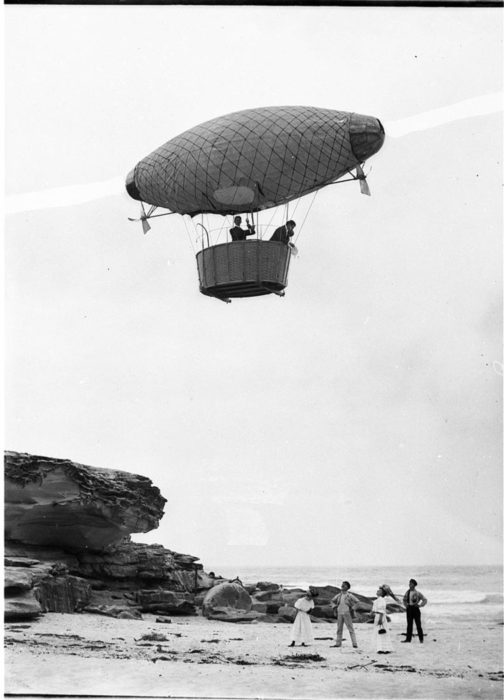The following article appeared on p. 4 of the 15 June 1914 issue of the Broken Hill (NSW), newspaper, the Barrier Miner:
AIRSHIPS AGAINST THE MAD MULLAH
Aden, Saturday.
Naval Lieutenants Boothby and Richard B. Davies are at Berbera, investigating the feasibility of utilising airships for the purpose of an expedition to subdue the Mad Mullah in the desert.
This is interesting for three reasons. The first reason is that it's a very early instance of the idea of air control, using airpower to subdue colonial unrest. The classic example of air control was in the Iraq mandate in the 1920s, which was inspired by the RAF's success in 1920 in helping to end the revolt in Somaliland of Abdullah Hassan (the 'Mad Mullah'), a revolt which had been causing the British grief since the last days of Victoria's reign. But this shows that air control was being contemplated in 1914, a full six years earlier. If the Great War hadn't intervened, Somaliland would probably have been the first operational use of British airpower -- and carried out by RNAS airships, too, not RFC aeroplanes.1
The second reason why it's interesting is that less than two months later, F. L. M. Boothby, now an RNAS squadron commander, was attached to the Vickers airship shed at Barrow-in-Furness, where the large rigid airship HMA 9 was under construction. At Barrow, Boothby was instrumental in fanning an airship panic at the start of the war, informing Whitehall of his theory that the Germans 'have a temporary base in the hills' nearby. It seems likely that in coming up with the idea of a forward aerodrome in Cumberland that he drew on his recent experience in planning forward aerodromes in Somaliland.
The third reason why it's interesting is because of the way that I found it, through Trove, the National Library of Australia's portal to many different kinds of information, including digitised newspapers. Actually, that's not all that interesting; I use Trove all the time. I've used it to uncover Australian mystery aircraft sightings, of course, but also the Imperial Aircraft Flotilla, the March to Freedom, blockbuster bombs, the Willunga Rifle Volunteers, even milk bars -- the list goes on. It's such a brilliant discovery tool that it's natural to turn to it when research a topic, sometimes even if that topic has nothing to do with Australia. The ease of use matters; while there are some good newspaper archive interfaces out there, the best have clearly been influenced by Trove itself; and they all could do a lot worse than to adopt Trove's front- and backends wholesale. It is quite simply one of the world's best digital history resources.
Which brings me to the real reason why this is interesting, not because of the article itself, but because I found it in the last Trove search I did before finding out that Trove's funding is being cut, in what is euphemistically described as an 'efficiency dividend' (if it was really a dividend, it would come after an increase in efficiency, not before a decrease in services). Jobs will be lost, 22 across the NLA. It's not going to be shut down; in the first instance it will stop aggregating some content. But that fantastic interface is useless without the content. And this is the thin end of the wedge; other major national cultural institutions (except for the Australian War Memorial, of course; and there's still lots of money for a new Anzac museum in France) are also receiving budget cuts. As many others have pointed out, there's a fundamental disconnect between the federal government's rhetoric praising innovation and technology, and the lack of support for an amazing Australian success story. It's not smart.
What can you do? Start with Tim Sherratt, then read the Conversation, like the Facebook page, follow the hashtag, sign the petition, or even write the senator.
![]() This work is licensed under a Creative Commons Attribution-NonCommercial-NoDerivatives 4.0 International License.
Permissions beyond the scope of this license may be available at http://airminded.org/copyright/.
This work is licensed under a Creative Commons Attribution-NonCommercial-NoDerivatives 4.0 International License.
Permissions beyond the scope of this license may be available at http://airminded.org/copyright/.




Pingback:
Introducing @troveairbot – Airminded